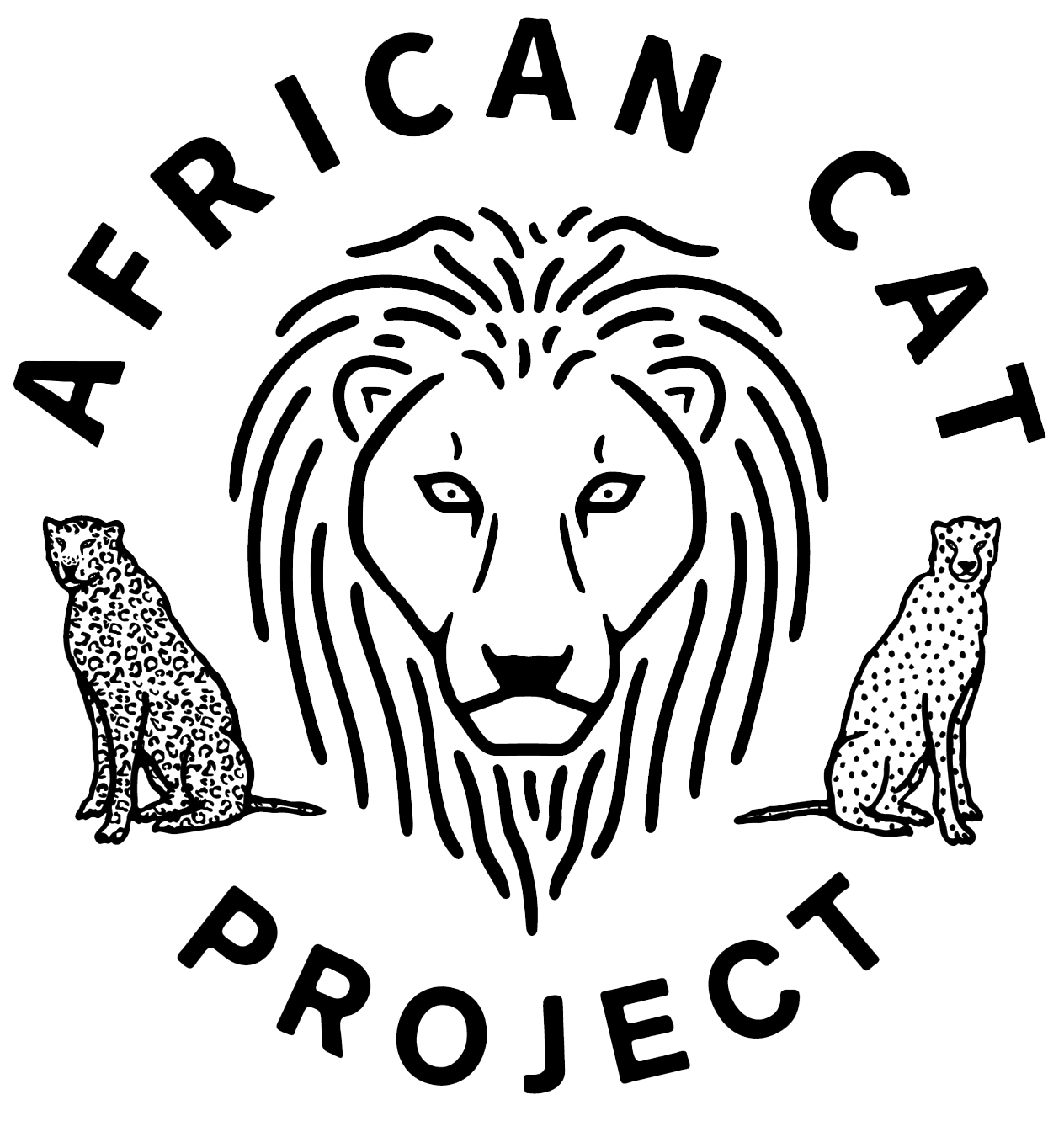An Update from Harnas - Interview with Erin Rainey, Wildlife Researcher
Spending time volunteering at Harnas Wildlife Foundation in Namibia last year was the highlight of my life, especially spending time with a little orphaned cheetah cub who'd only arrived a few days before me. Orphaned carnivores in Namibia are unfortunately a very common thing, due to habitat loss and human conflict (big cats are often shot when they come close to farms, leaving their cubs without a mother). But the story for this little cheetah cub has a very happy ending.
The happy ending that you'll read all about in this blog post is what inspired me to launch our African Cat Appeal. In case you missed it or are new to CTM, we now support the Lifeline at Harnas, as well as the release of big cats at N/a'an ku se Wildlife Foundation in Namibia with the sale of our new big cat tees and other merchandise. Check them out in our Australia, US, EU and Africa shops now!
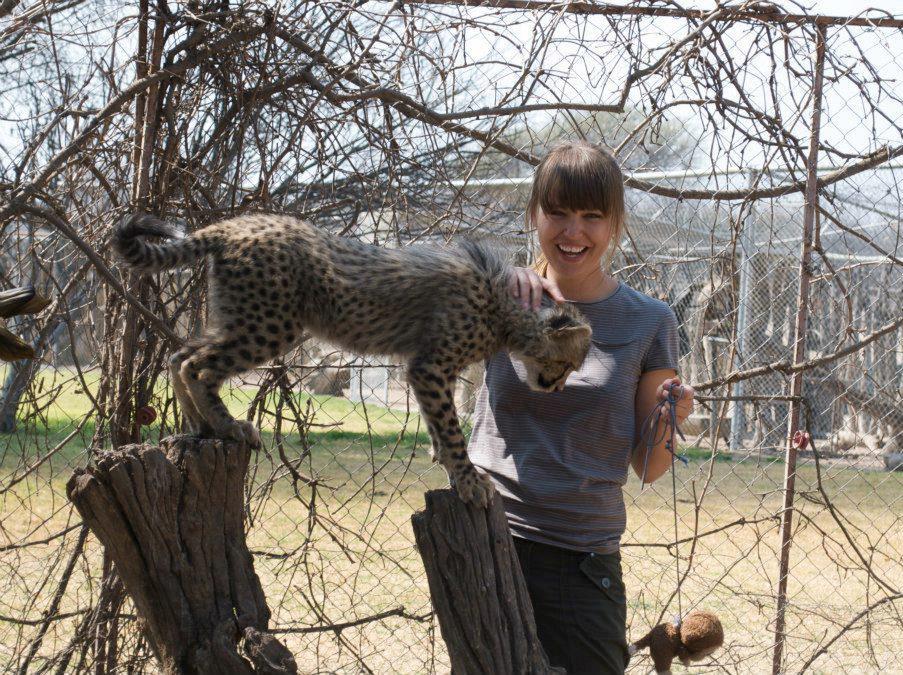
Myself playing with the little orpahned cheetah cub, who was later called Dinga
Today we speak to Erin Rainey, a fellow Aussie who worked and lived on Harnas for 4 + years, and worked as a researcher in the Lifeline, an 8000 ha free living release site for carnivores that is almost the size of Manhattan! Keep reading to hear all about the Lifeline, Erin's bond with a cheetah named Pride, and the little orphaned cheetah cub's happy ending.
1. How did you come to be part of the Research Team at Harnas? I had returned to Harnas (after volunteering) to help management but they were not sure what to do with me and was just floating. I was complaining to one of the staff that I was bored and didn't feel like I was making a difference. He had just founded the Research Department but was also juggling a huge work load with managing the volunteer project as well so just to get me out of his hair, he told me to read over the spreadsheets and design protocols he had started and to see if I could develop them. I had designed and carried out research projects on animal behaviour as part of my Animal Science degree but never anything like this. I spent the next week reading every research paper ever written on cheetahs and impressed him with what I came back with. From there I became his assistant and grew my skills over a couple of years, eventaully becoming part of senior management.
2. How did your bond with Pride progress to what it is today? The biggest part of my job was the daily trips into the Life Line to check on the progress of the released animals. As they are all hand raised and we were 'teaching' them to live like their wild cousins, we kept a close eye on their progress as it's not simply a case of opening the gate to an enclosure and saying, "Ok, well good luck!" I saw her nearly everyday for almost 3 years, so I guess she had to learn to tolerate me but a big part of it is trust. She made me earn her trust but once I had it, she let me get away with pretty much anything and of course that trust was completely reciprocated - although she was hand raised I always respected the fact that she was still a wild animal.
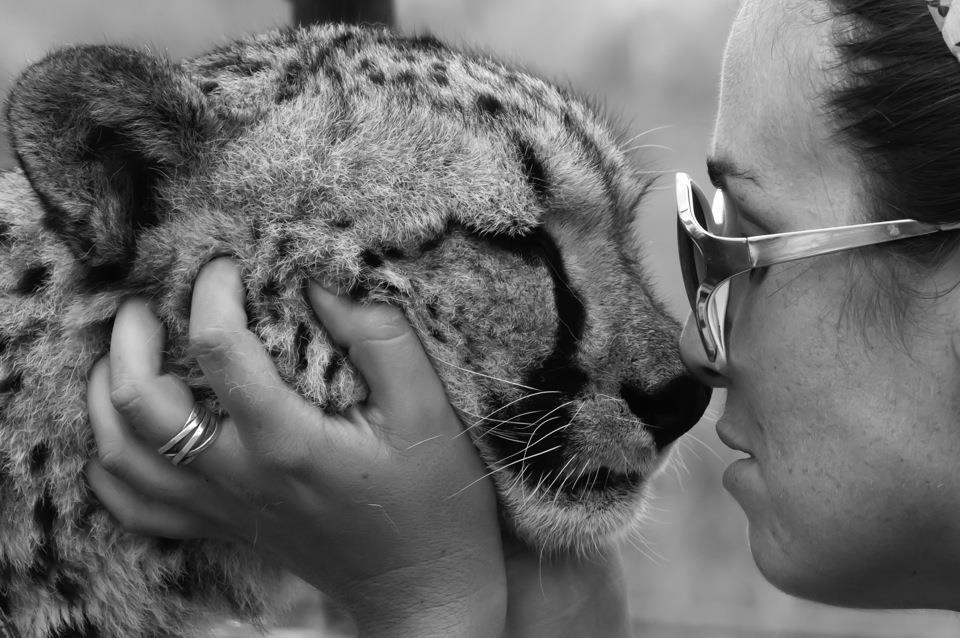
3. Can you tell us a bit about The Lifeline and how it works? The Life Line is an 8000 ha fenced reserve. It is used mainly for hand raised animals to allow them to live more of the life that nature intended. It's a long process and each animal is different. Pride was the very first candidate back in 2009 and it took almost 18 months before she graduated to full time release but Max and Mauritz arrived in 2011 (2 adult male brothers) and it only took a few months before they were deemed ready, so there is no set formula for it. The animals start with day releases and build up to overnight stints and depending on such factors as their hunting ability, movements and predator awareness, their suitability for full time release can be assessed. However, it's not only about releasing the predator. Game counts happen regularly to ensure there is enough of the right food available for the predators and fence patrols to ensure their are no holes for them to escape onto neighboring land - but if the predators are kept satisfied with enough viable food and living options with the right balance of other predators, then hopefully their need to disperse is reduced.
4. In August 2012, the decision was made to introduce Dinga, a little orphaned cheetah cub, to Pride, in the hopes she would adopt him. Was this an easy decision to make? Explain to us what happened when Pride and her existing cub Merci, met Dinga. It wasn't an easy decision in the way that I didn't know what would happen but I think that captivity should be the absolute last option. In Dinga's case, he had another option so I felt it was worth the risk. When Merci and Beaucoup (deceased) were born in March 2012, I read a lot of papers regarding cheetah reproduction and one paper made a side note about observing females occasionally adopting orphan cubs in the wild. Around that time, a friend had also sent me a clip from a Zoo in The States where a female had adopted an abandoned cub but I didn't think anything more of it until Dinga arrived. The research suggested this would only be possible if the female already had cubs and if they were around the same age. Pride and Merci ticked both these boxes. I was extremely anxious as I had no idea how Pride or Merci would react. Pride immediately took the cub, even stutter barking and calling to him. He was so excited to see her, you could see how much he craved her attention. This seemed to be going perfectly, I couldn't believe it. So I released Dinga into the larger holding pen that Pride and Merci were in and Pride didn't seemed to be fussed but Merci was having none of it! She started slapping and swiping at him. Dinga was completely submissive but Merci wasn't letting up. This started to upset Pride and when she started to swat the cub, I had to separate them. I left him in their holding pen but in his own enclosure. He spent the next 24 hours calling her and begging for attention but the only attention he received from the girls was aggression. I was devastated. I rang a colleague and he said to put the cubs together, away from Pride and let them sort it out themselves. I was nervous - Merci gave him quite a beating and the little guy had gone through so much already! We eventually managed to shepard Merci into Dinga's enclosure and the cubs had a few swipes at each other but eventually calmed down, probably more out of exhaustion than anything else though! That night, we found the cubs huddled up together, sleeping peacefully. The next day I was able to open up his enclosure and let Pride investigate. She wandered in and Dinga's eyes lit up, he jumped on her and she swiped him with a growl. He immediately dropped and approached her again but this time more calmly. She laid down, he sat between her front paws and she started grooming him. No growling, biting or swiping - just purring. We kept them in the holding boma and watched them for the next few days just to make sure but they were a cohesive family unit. Merci had a brother again after Beaucoup had passed in June and having a sibling will benefit both cubs immensely as they grow and leave Pride to fend for themselves.
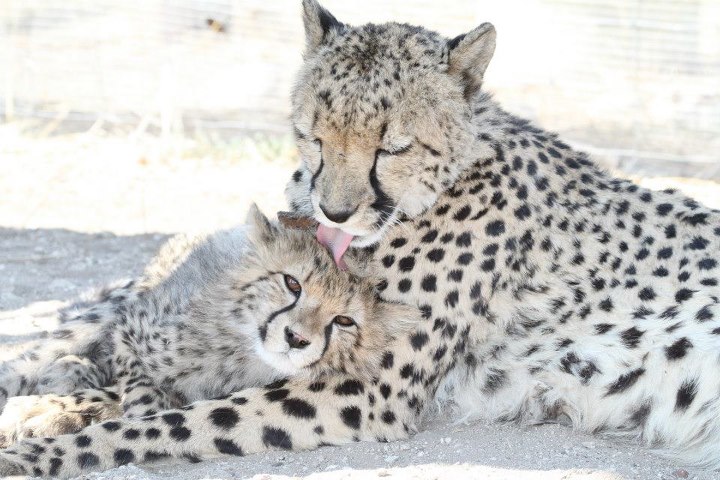
5. How are Pride, Merci and Dinga getting along today? If you didn't know the background, you wouldn't even know Dinga was adopted. In the beginning, he was very attached to Pride - her second shadow and a little shy. As time progressed, he became more confident and wasn't as submissive to Merci. When we first put them together, he was definitely a "mummy's boy" but now can certainly hold his own and I have truly enjoyed watching this family unit develop. It's a beautiful story.
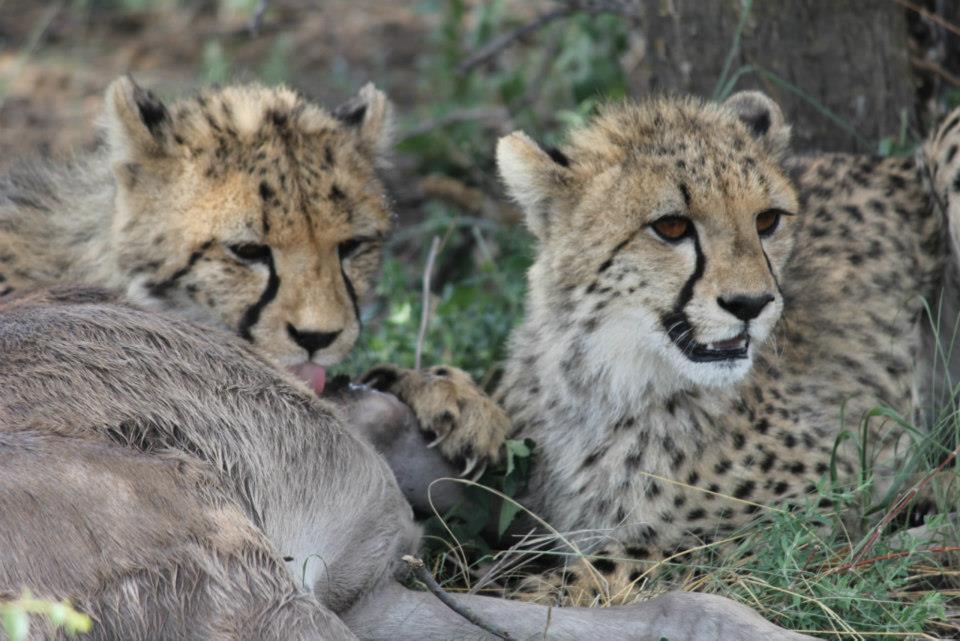
6. What was the highlight of your time at Harnas? I have certainly had a lot of highlights during my years at Harnas, but I think if I had to pick one it'd be sitting in the Life Line alone with Pride and the cubs when they were only a few days and weeks old. It kind of summed up everything Pride had achieved and also how much she obviously trusted me, to allow me to observe her and her cubs at such close quarters - I gained a lot of insight into cheetah sociobiology. Maybe one day I'll write a book..! Haha!
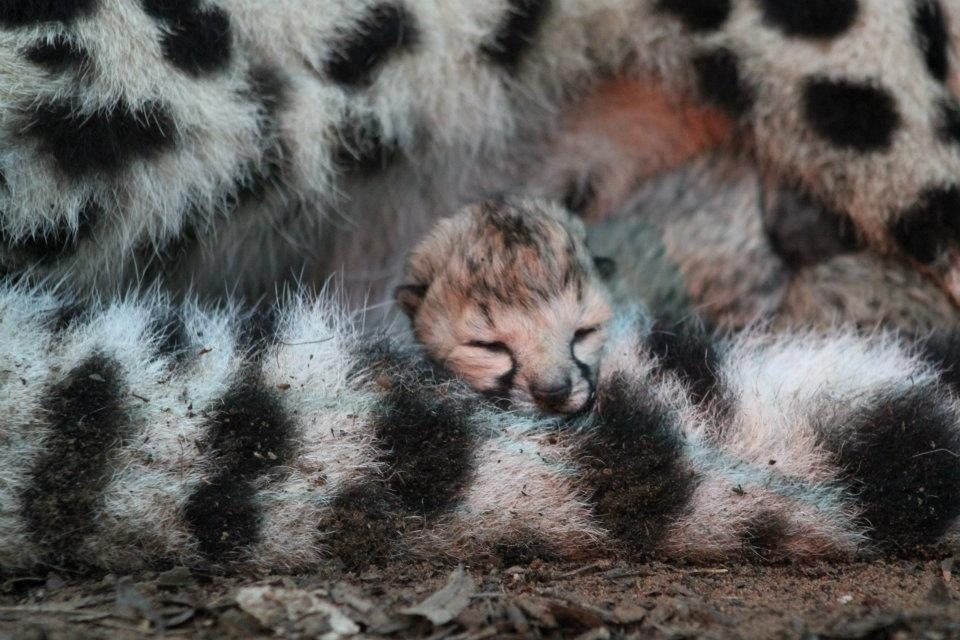
7. How hard was the decision to move on from Harnas, and the love of your life, Pride? It was incredibly hard to move on. It was one of those do you listen to your head or your heart situations. It was especially hard to leave Pride but in the end I felt I had achieved what I set out to do when I first started with the Research Department. Pride actually went missing for almost two weeks last Christmas. She had managed to disarm her collar and although I had a rough idea of where she was, the Life Line is 8000 ha and it was literally like trying to find a needle in a haystack. I was extremely distraught. Was she injured? Dead?! Escaped from the reserve?! What about the cubs?! When I eventually tracked her down, she and both cubs were in the best condition I had ever seen them in. I had always had this feeling of "I can't leave. What will Pride do?" but this showed me she didn't actually need me as much as I thought she did, that she embodied the vision of what the Life Line was all about and what I had spent all those years helping her to become.
8. What's next for Erin Rainey?
Well I am back in Australia hoping to find a job over here. So far, the outlook is not so hot! I've spent the last four and half years working with African wildlife and there's obviously not such a great career path for that in Oz but I'm hoping something will come up and that my unusual experience will spark someone's interest!
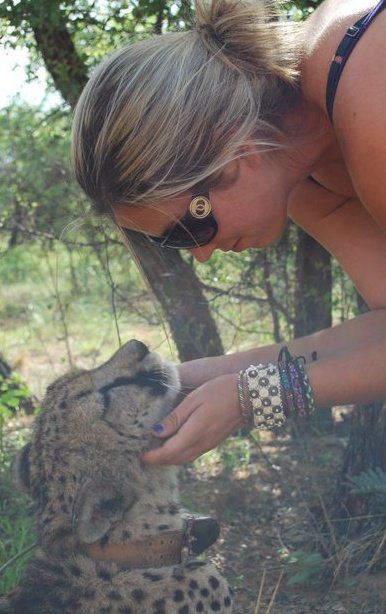
A huge thanks to Erin for this interview. I think we're all a little envious of the amazing experiences she's had! Follow her adventures on Twitter: @EzRainey. You can contribute to Pride and the cubs by sponosring them or donating to Harnas, or by purchasing one of our tees, hoodies, mugs, phone covers and more! Cat Tee Mission is 100% non-profit and run by volunteers, so we donate ALL of our profit to Harnas and the other groups we support. Click here to find out more about who those groups are. (There's also a special on in our US and EU shops until 7th June. Get 15% off all tee shirts with coupon code: MYSHIRT2013).
=^..^=
